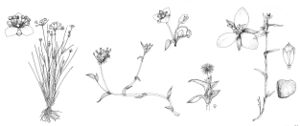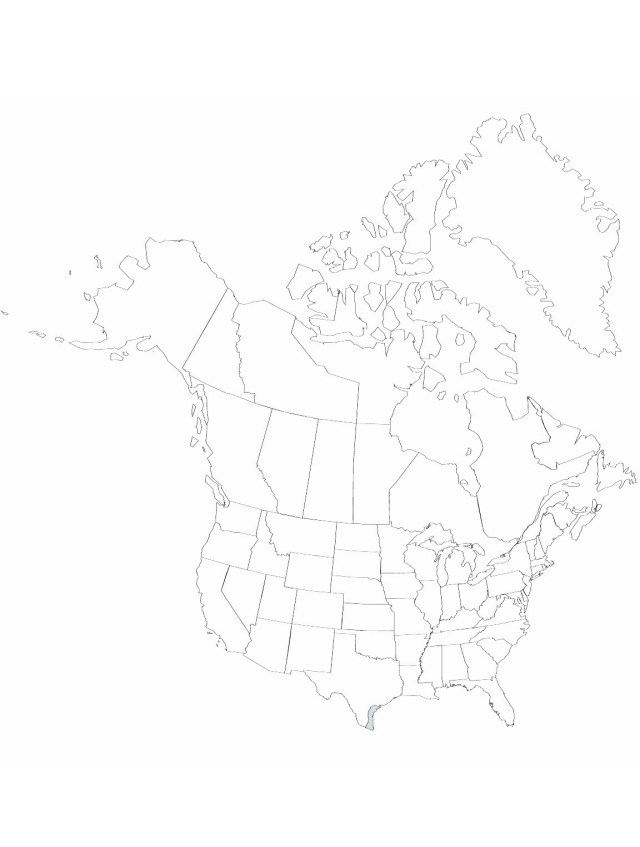Callisia micrantha
Kew Bull. 38: 131. 1983.
Herbs, perennial, creeping, succulent. Stems 3–30 cm. Leaves ± conduplicate; blade oblongelliptic to lanceolate-oblong, 1–3.5 × 0.3–0.8 cm (distal leaf-blades much narrower than sheaths when sheaths opened, flattened), margins ciliolate, glabrous. Inflorescences sessile or nearly sessile, subtended by 0–2 leaves that resemble spathaceous bracts, these leaves. Flowers pedicellate; pedicels 0.8–1.2 cm, glabrous or nearly so; sepals strongly keeled, 0.4–0.5 mm, shortly, densely pubescent on keel; petals bright pink to rose, ovate, 0.5–0.7 cm; stamens 6; filaments bearded. Capsules 3-locular, 2 mm. Seeds 1.5 mm. 2n = 24.
Phenology: Flowering spring–fall (May–Sep).
Habitat: Sandy or clayey soils in open oak or mesquite woods and prairies
Discussion
The generic placement of this species requires some explanation because the leaves subtending the inflorescence resemble the bracts of species of Tradescantia. The interpretation of D. R. Hunt (1986b), which I am following, is that the true bracts are small and are borne distal to those leaves.
Selected References
None.

